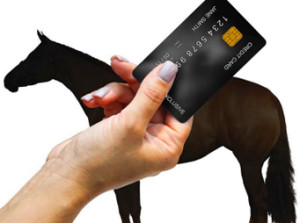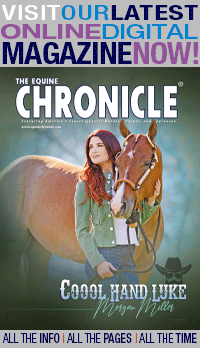If The Price is Right – A Common-Sense Guide to Pricing Horses
Click here to read the complete article66 – March/April, 2018
BY DELORES KUHLWEIN
 The growth of a rider is a beautiful process to behold. Whether it’s a small fry exhibitor moving up into the big leagues, or a novice rider moving up an age division, a rider’s progression often brings with it the necessity for a new equine partner that matches his/her advancing skill level.
The growth of a rider is a beautiful process to behold. Whether it’s a small fry exhibitor moving up into the big leagues, or a novice rider moving up an age division, a rider’s progression often brings with it the necessity for a new equine partner that matches his/her advancing skill level.
However, for many horse owners, in order to buy another, they must first sell the one they have. With that comes the all-important question: What price is right?
To get a broad picture of what elements to consider when setting a price, The Equine Chronicle consulted with four respected trainers who offer diverse perspectives in AQHA and APHA performance and halter disciplines: Charlie Cole of High Point Performance Horses in Pilot Point, Texas; Sara Simons of Simons Show Horses in Aubrey, Texas; Mike McMillian of Mike McMillian Quarter Horses in Whitesboro, Texas; and Buddy Laney of Fossil Gate Farms in Argyle, Texas.
The Upper Echelon
A big question in many exhibitors’ minds is: When does a horse deserve a list price upwards of $100,000?
Laney explains that he’s experienced selling Halter horses at this price level, as babies, but the important thing to note is that these horses are certainly not average. “They’ve got to have something that other horses just don’t in order to bring that kind of money. It’s more common in mares and geldings, but there must be something there: a bigger hind leg, or a freakier neck and head that other horses don’t have. You’ve got to step it up a notch for that kind of price,” he says.
For McMillian, a horse of this caliber is more valuable than the average horse because of its record. “Usually, if a horse sells for this amount, it has already proven to be superior in its discipline or use. It’s not easy to reach that level of competition, and that’s why these horses bring a price of 100K, 200K, or even more.”
For Cole, deciding to price a horse in this category requires a straightforward evaluation. “For me, a horse needs to have at least two of these three qualities in order to bring that kind of money: 1 – Great movement; 2 – Great mind; 3 – Exceptional eye appeal.”
Simons says to keep in mind the market you’re selling in and to determine whether that market is specialized. “For any market, I would say attractiveness, personality, and demeanor are factors. In the Paint market, size is an influence, because we’re not as specialized. A horse anywhere between 15.3 and 16.1 hands is kind of ideal; it’s not so big that it can’t get through the Trail, and it can wear an English saddle and look presentable. If they’re going to be in that six-figure range, they should be able to compete in multiple events.”
So, let’s take a look at the basics…
Click here to read the complete article66 – March/April, 2018










